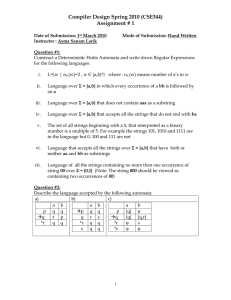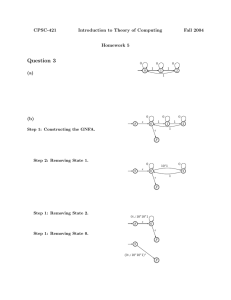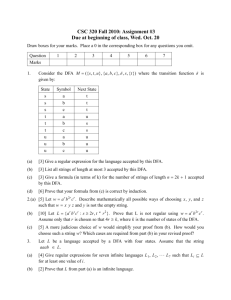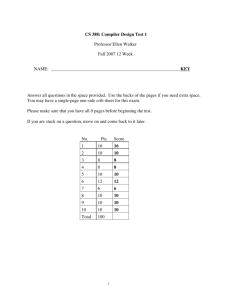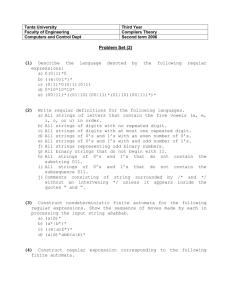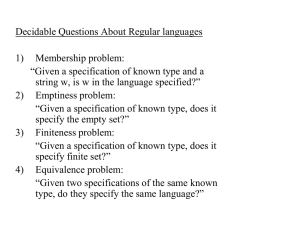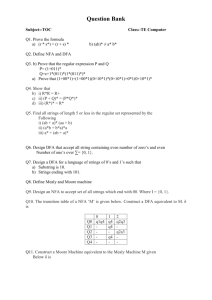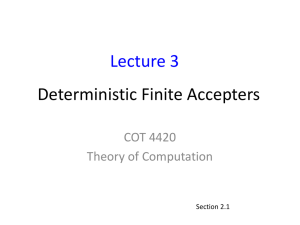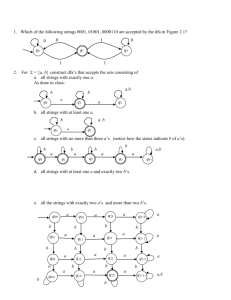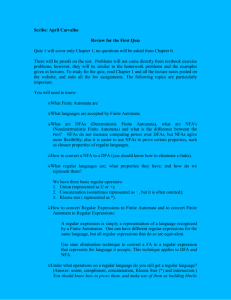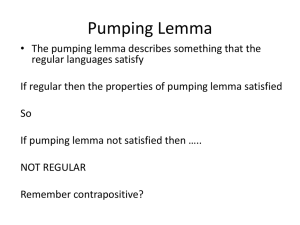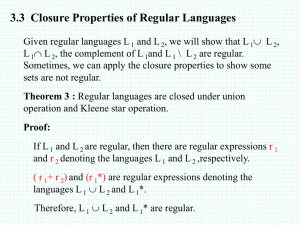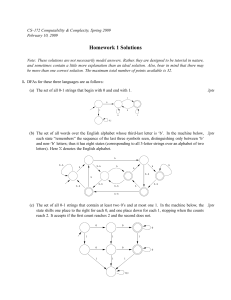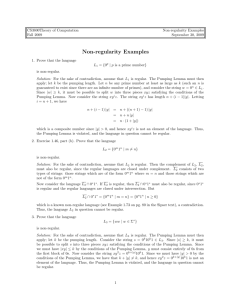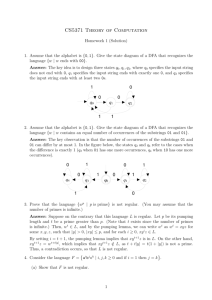doc
advertisement
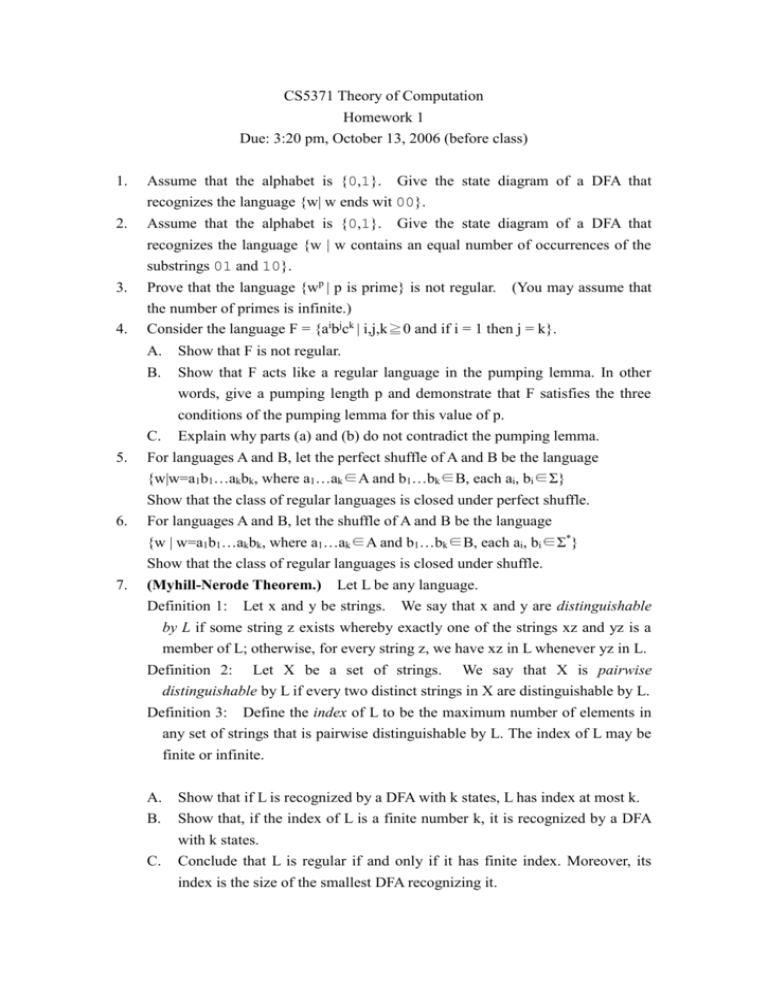
CS5371 Theory of Computation
Homework 1
Due: 3:20 pm, October 13, 2006 (before class)
1.
2.
Assume that the alphabet is {0,1}. Give the state diagram of a DFA that
recognizes the language {w| w ends wit 00}.
Assume that the alphabet is {0,1}. Give the state diagram of a DFA that
recognizes the language {w | w contains an equal number of occurrences of the
substrings 01 and 10}.
3.
4.
Prove that the language {wp | p is prime} is not regular. (You may assume that
the number of primes is infinite.)
Consider the language F = {aibjck | i,j,k≧0 and if i = 1 then j = k}.
A.
B.
Show that F is not regular.
Show that F acts like a regular language in the pumping lemma. In other
5.
words, give a pumping length p and demonstrate that F satisfies the three
conditions of the pumping lemma for this value of p.
C. Explain why parts (a) and (b) do not contradict the pumping lemma.
For languages A and B, let the perfect shuffle of A and B be the language
6.
{w|w=a1b1…akbk, where a1…ak∈A and b1…bk∈B, each ai, bi∈Σ}
Show that the class of regular languages is closed under perfect shuffle.
For languages A and B, let the shuffle of A and B be the language
{w | w=a1b1…akbk, where a1…ak∈A and b1…bk∈B, each ai, bi∈Σ*}
Show that the class of regular languages is closed under shuffle.
7.
(Myhill-Nerode Theorem.) Let L be any language.
Definition 1: Let x and y be strings. We say that x and y are distinguishable
by L if some string z exists whereby exactly one of the strings xz and yz is a
member of L; otherwise, for every string z, we have xz in L whenever yz in L.
Definition 2: Let X be a set of strings. We say that X is pairwise
distinguishable by L if every two distinct strings in X are distinguishable by L.
Definition 3: Define the index of L to be the maximum number of elements in
any set of strings that is pairwise distinguishable by L. The index of L may be
finite or infinite.
A.
B.
C.
Show that if L is recognized by a DFA with k states, L has index at most k.
Show that, if the index of L is a finite number k, it is recognized by a DFA
with k states.
Conclude that L is regular if and only if it has finite index. Moreover, its
index is the size of the smallest DFA recognizing it.
8.
(Bonus Question)
If A is any language, let A1/2 be the set of all first halves of
strings in A so that A1/2 ={ x | for some y, |x| = |y| and xy∈A}
Show that, if A is regular, then so is A1/2.

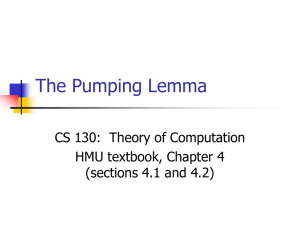
![Computer Science 421 Section 101 page 1 out of 7 [5]](http://s2.studylib.net/store/data/011171287_1-f9dfbb5015b411524d3d6633f64aeeec-300x300.png)

